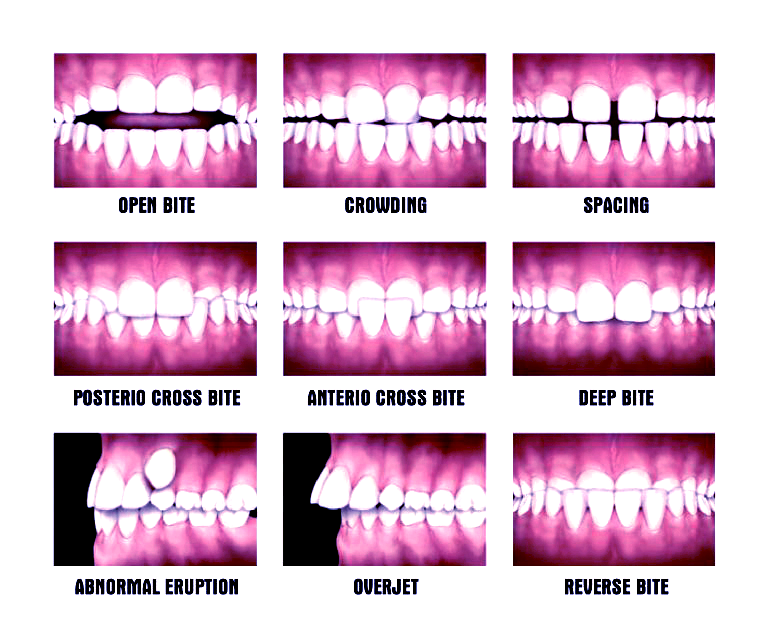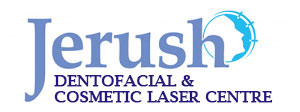
Braces / Clips treatment in Nagercoil
Braces / Clips treatment for Malocclusions
Dental malocclusion means the abnormal alignment of the upper and lower teeth. Etiology: Childhood habits such as thumb sucking, tongue thrusting, using pacifiers beyond age 3, and prolonged use of bottle feeding, extra teeth, lost teeth, impacted teeth, or abnormally shaped teeth.Different types of malocclusions:
- Overjet
- Overbite
- Anterior crossbite (underbite)
- Spacing
- Diastema
- Missing teeth
- Impacted tooth
Classification of Malocclusion:
[caption id="attachment_1956" align="alignnone" width="768"] Malocclusion-types[/caption]
In 1894, Edward H. Angle published the first classification of the malocclusion.
Class I Malocclusion: Neutrocclusion: It is the most common malocclusion with normal bite and light overlap of teeth.
Molar relation: The Mesiobuccal cusp of the upper first permanent molar occludes with the mesiobuccal groove of the lower first molar. But the line of the occlusion is altered in both the arches because of individual tooth irregularities [ Crowding/spacing/rotations of other localized problems of tooth and inter-arch problems (open bite/deep bite/crossbite)]
Class II Malocclusion: (Distocclusion/Retrognathism,/overbite ) This occurs when upper jaw and teeth severely overlap the lower jaw and teeth.
Molar relation: The mesiobuccal cusp of the maxillary first permanent molar occlude mesially to the mesiobuccal groove of the mandibular first molar.
Malocclusion-types[/caption]
In 1894, Edward H. Angle published the first classification of the malocclusion.
Class I Malocclusion: Neutrocclusion: It is the most common malocclusion with normal bite and light overlap of teeth.
Molar relation: The Mesiobuccal cusp of the upper first permanent molar occludes with the mesiobuccal groove of the lower first molar. But the line of the occlusion is altered in both the arches because of individual tooth irregularities [ Crowding/spacing/rotations of other localized problems of tooth and inter-arch problems (open bite/deep bite/crossbite)]
Class II Malocclusion: (Distocclusion/Retrognathism,/overbite ) This occurs when upper jaw and teeth severely overlap the lower jaw and teeth.
Molar relation: The mesiobuccal cusp of the maxillary first permanent molar occlude mesially to the mesiobuccal groove of the mandibular first molar.
|
Class II Division I |
Class II Division II |
| Upper incisors are proclaimed | Upper central incisors show lingual inclination and maybe overlapped by upper lateral incisors |
| Excessive overjet and deep overbite | Deep overbite |
| V-shaped upper arch | Broad upper arch |
| Failure in anterior lip closure | Normal lip seal. Deep mental groove. |
Treatment for Dental Malocclusion:
Management of Class I Malocclusion: Spacing and crowding can be corrected by fixed orthodontic braces. This treatment requires 6 months to 1 year, depending on the patient’s bone density. Crowding can be corrected by placing braces to correct the position of the teeth by the removal of teeth to correct overcrowding, surgery to reshape or shortening the jaw wires or plates to stabilize the jaw bone. Management of Class II malocclusion:- Orthodontic Braces | 2. Conventional Orthodontics | 3. Surgical intervention | 4. People with retrognathic mandible may also develop this disorder
[caption id="attachment_1961" align="alignleft" width="105"]
 Dr. Sangari[/caption]
Author: Dr. Sangari, One of the Top Dentists in Jerush Dental & Facial Corrective Centre with more than a decade of experience in dental patient care. Very patient friendly and anyone would feel like a neighborhood doctor. Dr. Sangari's long term dedicated association in our center, proved like an inevitable member among team surgeons, in creating millions of happy smiles.
Dr. Sangari[/caption]
Author: Dr. Sangari, One of the Top Dentists in Jerush Dental & Facial Corrective Centre with more than a decade of experience in dental patient care. Very patient friendly and anyone would feel like a neighborhood doctor. Dr. Sangari's long term dedicated association in our center, proved like an inevitable member among team surgeons, in creating millions of happy smiles. 
No Comments yet!